In reply to NickD :
Here is a pic of NP running a GP9 with an RDC, so CP wasn't the only one to do it. I don't think this was a usual practice, but it happened at least once. (I pulled the pic from a Youtube video).
In reply to NickD :
Here is a pic of NP running a GP9 with an RDC, so CP wasn't the only one to do it. I don't think this was a usual practice, but it happened at least once. (I pulled the pic from a Youtube video).
I captured a bunch of screenshots from the same video. This one is interesting as it shows two F7 A-B sets with two GP9s in the middle of the consist. Not sure if this much power was typical for this train that ran daily between Spokane, WA and Lewiston, ID back in the day or not. Other pics I have of it, seem to have just the A-B-B-A FT units or a single FT A-B set with two GP7s. This is the only pic I have of this train with 6 locos.
Here is the video if anyone wants to watch it. It's just a collection of pictures with captions from the 50's and 60's in an around Pullman, WA.
Hmm, I wonder if they are towing that RDC with the GP9 due to the snow? Concerns that the RDC might not have enough power to punch through snow banks if it encountered any, maybe?
In reply to NickD :
Not sure. Lewiston is around 750 ft in elevation and Pullman is more like 2,400 ft. They are about 30 miles away from each other as the crow flies, not sure what the grade was along the route, but maybe the GP9 was used to make sure the RDC was able to make it up the grade. The caption says it was normally assigned to the Camas Prairie, so it wouldn't normally be in Pullman. Maybe was up in Spokane for maintenance and was just be transfered back to Lewiston to get it back to its home. No idea.
Apparently CPR hauled RDCs pretty frequently on Train 629 "The Bullet", which was a daily London-to-Toronto business train. They would drop off a few coaches at London, then the locomotive and remaining coaches would stop at Windsor and the RDCs would continue on to Detroit.
That's Jubilee #3002 with a headend car, a coach, two RDCs and another coach on "The Bullet."
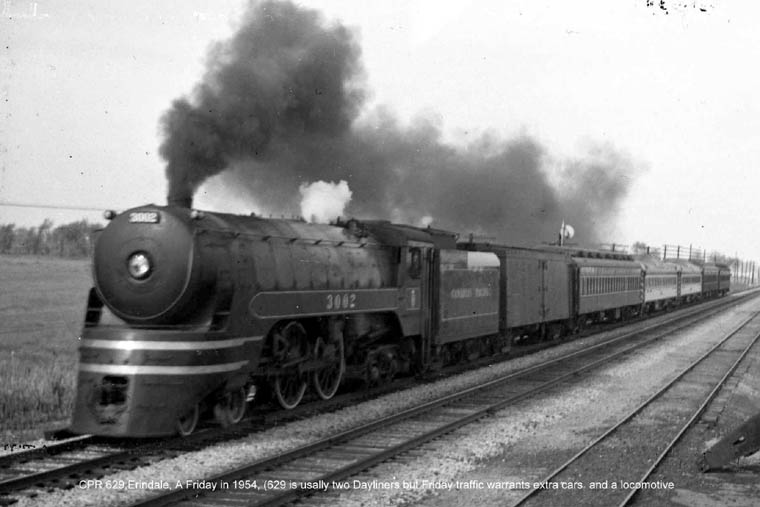
And that's #3002 doubleheading with a Hudson, #2856, with a baggage car, two RDCs and 9 passenger cars.
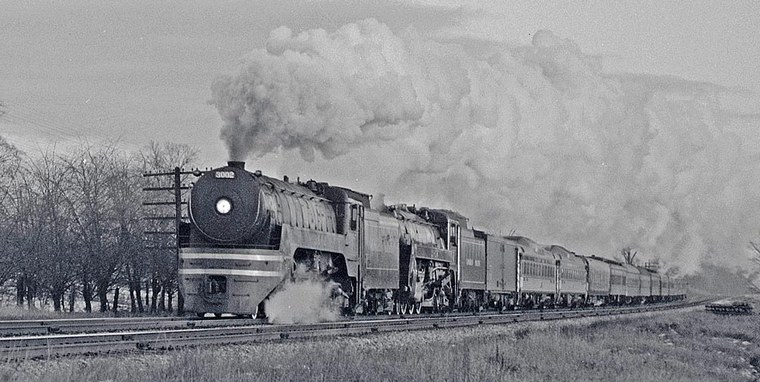
New York Central must have done it at least once, because there's a photo of an RS-3 towing two lightweight cars and an RDC. Again, probably the RDC was detached at some point to provide service to a branch line or to continue on to a further destination where lighter traffic made it not financially feasible to run a locomotive and cars. Also, NYC preferred to run their RS-3s in long hood forward configuration.
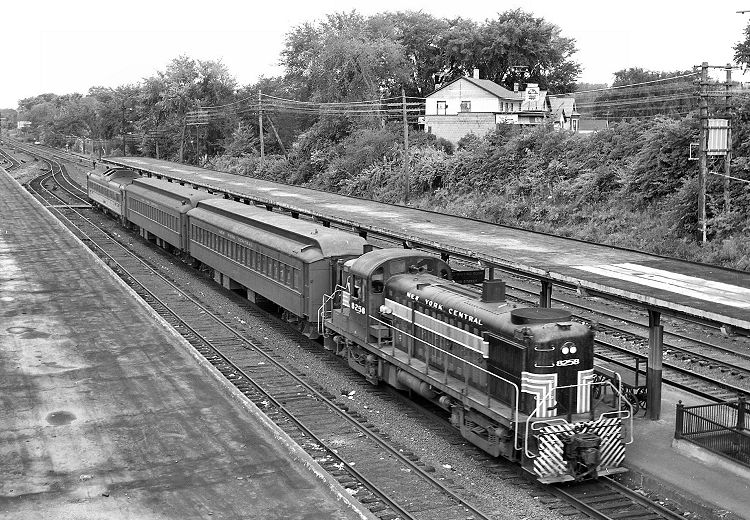
Also found Tooele Valley 2-8-0 #11 out in Utah hauling a single RDC. Again, in the snow, so maybe there were concerns about clearing snow drifts with the low-power RDC.

Using RDCs like that did give a nice bit of flexibility. I understand why you can't tow with them, as they were really only designed to be self-propelled and hauling with them might tax the transmissions, U-joinst and driveshafts. I'm guessing that you weren't supposed to tow them because, like a car automatic transmission, you might burn up the trans. But the heating and lights on an RDC are powered by the engine, so if you already had the engine running to power that, then the transmission should be okay.
I'm not sure if those are really FTs or F7's in that picture. The NP had some of each, and FTs would be fairly old in 1965, but this was not the mainline, so maybe they are FTs. I usually rely on seeing the cab number to tell the difference between various F units. I'm guessing there is a way to spot the differences.
Those would be FTs. FTs had 4 closely-spaced round portholes and a tall boxy fan assembly on the roof.
 The early F3 had 3 portholes more spaced out and mesh grilles. These are usually called a "Chicken Wire F3" Also, all F3s had flatter roof fans.
The early F3 had 3 portholes more spaced out and mesh grilles. These are usually called a "Chicken Wire F3" Also, all F3s had flatter roof fans.
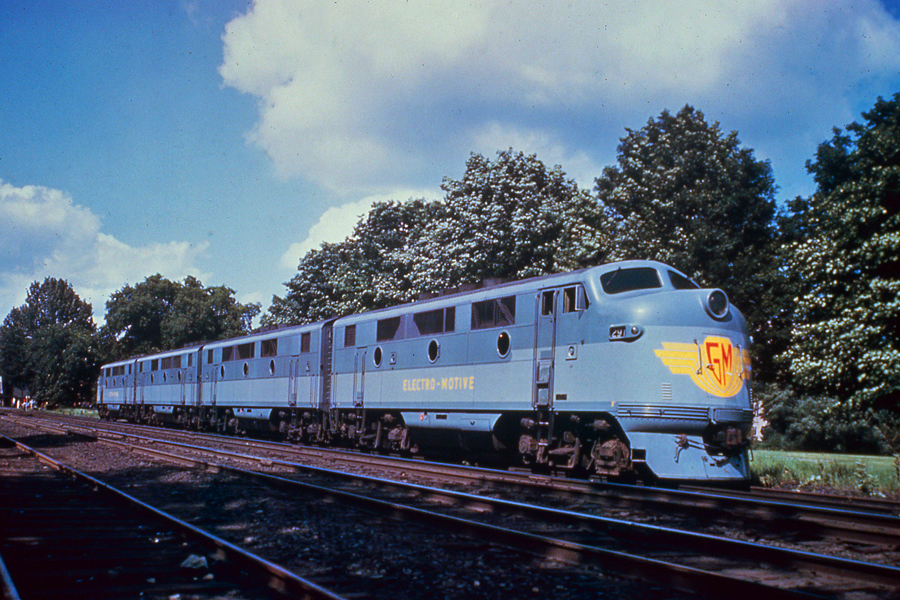
Later F3s had 2 portholes spaced way out and chicken wire grilles, except for very late units, which had stainless steel grilles.

All F7s had the stainless steel grilles and the wide spaced portholes. Its hard to tell a late F3 apart from an F7.
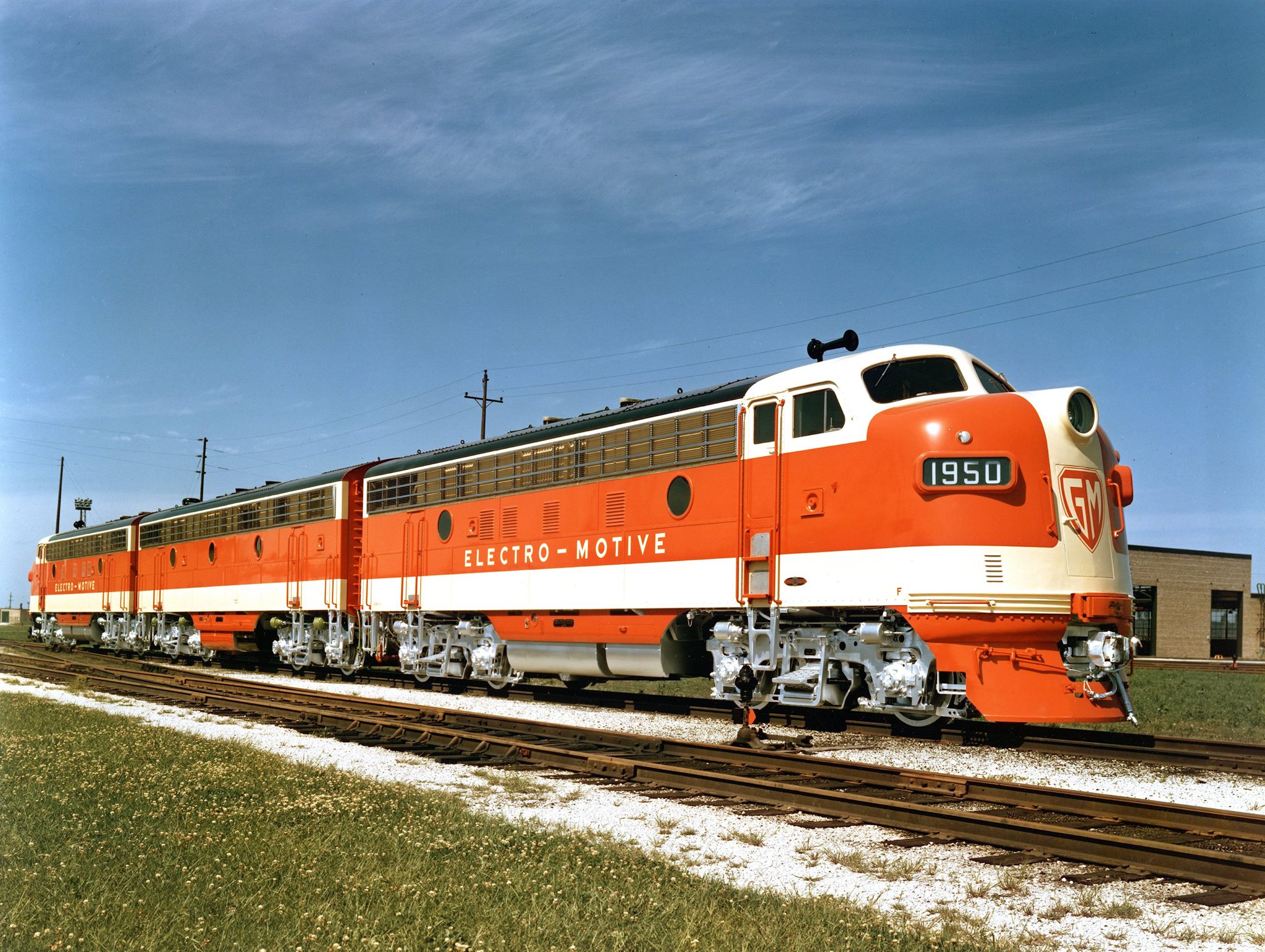
And the F9 has an extra inlet grille just ahead of the front porthole. That's it.
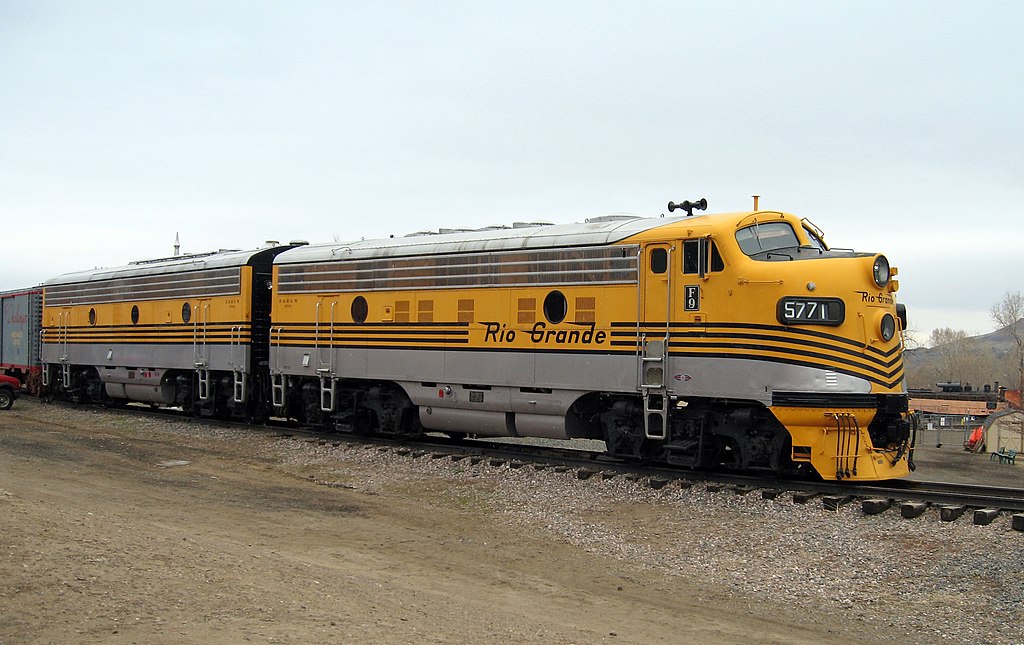
But cosmetically, portholes and grilles are the only way to tell F-units apart. And some railroads liked to order them with different grilles and porthole configurations as well. But I'm pretty confident that those are FTs.
Instead of hauling RDCs and splitting them off, the Chicago, Rock Island & Pacific (aka the Rock Island or The Rock) came up with a different solution on their clumsily named Rocky Mountain Rocket when they created the streamlined train in 1940. The idea was to run the train from Chicago to Limon, Colorado. At Limon, the train would split in two. Three cars would head to Colorado Springs, while the rest would head off to Denver. So the train needed two locomotives to haul each half. The easy solution would be to use two EMD E6 A-units. But having two A-units hooked back to back would break up the streamlined homogenous look of the train where the front of the second unit hooked to the first car.
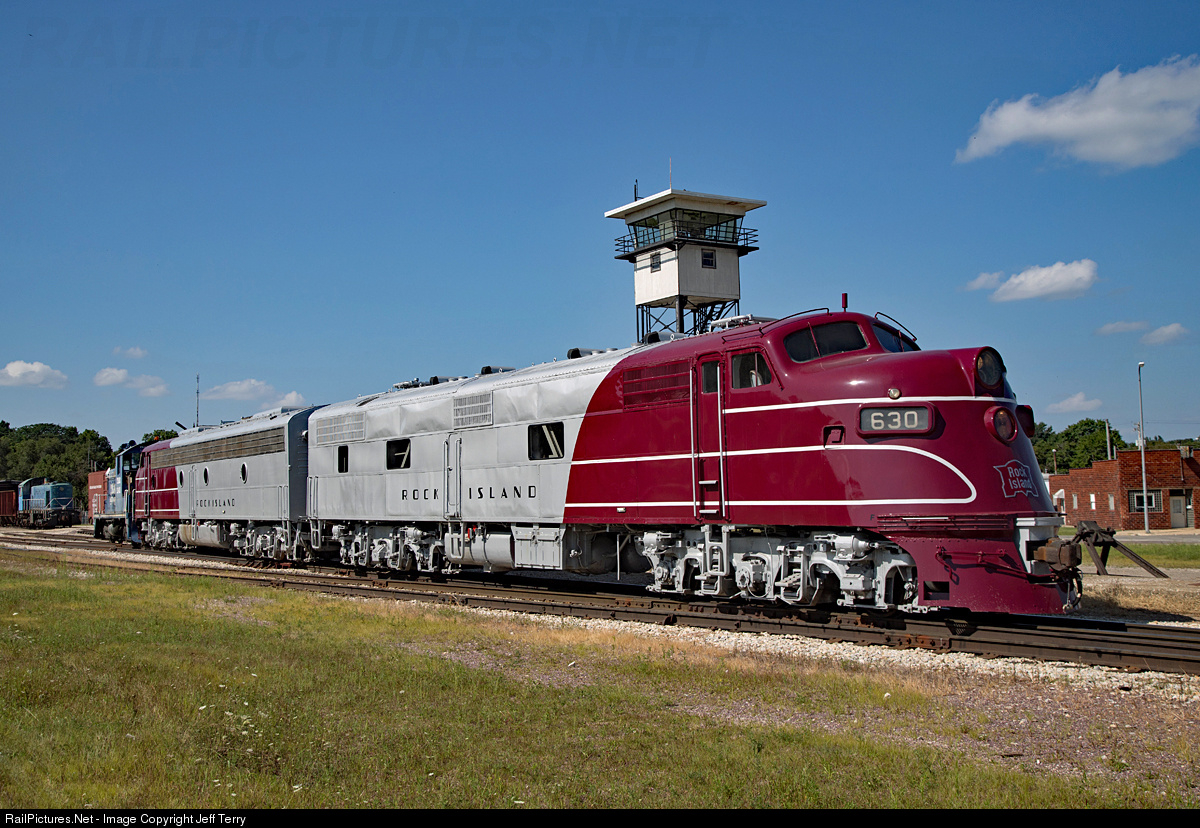
An EMD E6 B-unit would blend in better. But a B-unit had no controls of their own. So, Rock Island rang up EMD and explained the situation to them. And EMD obliged with two AB6s, numbered 750 and 751. They took an E6B and put a headlight on it and added windows and controls and a pilot on one end of it. Then, so that the train didn't need an extra baggage car, they yanked out one of the two 1000hp V12 567s and it's generator, and converted that space to a baggage compartment. Since the Colorado Springs segment of the train was only 2 or 3 cars, it didn't need 2000hp. Later, as the train grew, they did end up reinstalling the second engine and just towing an extra baggage car with the Colorado Springs segment.
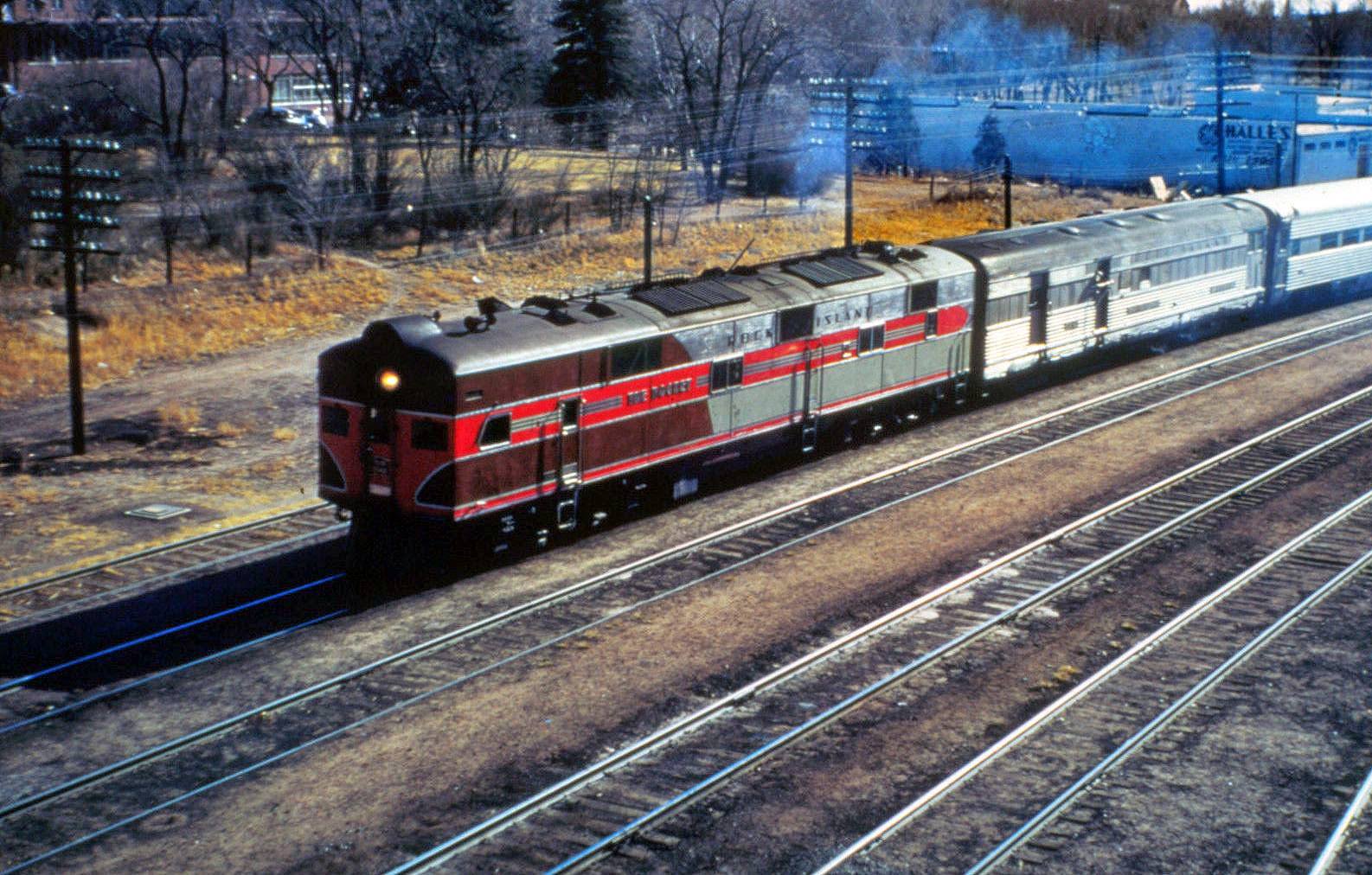
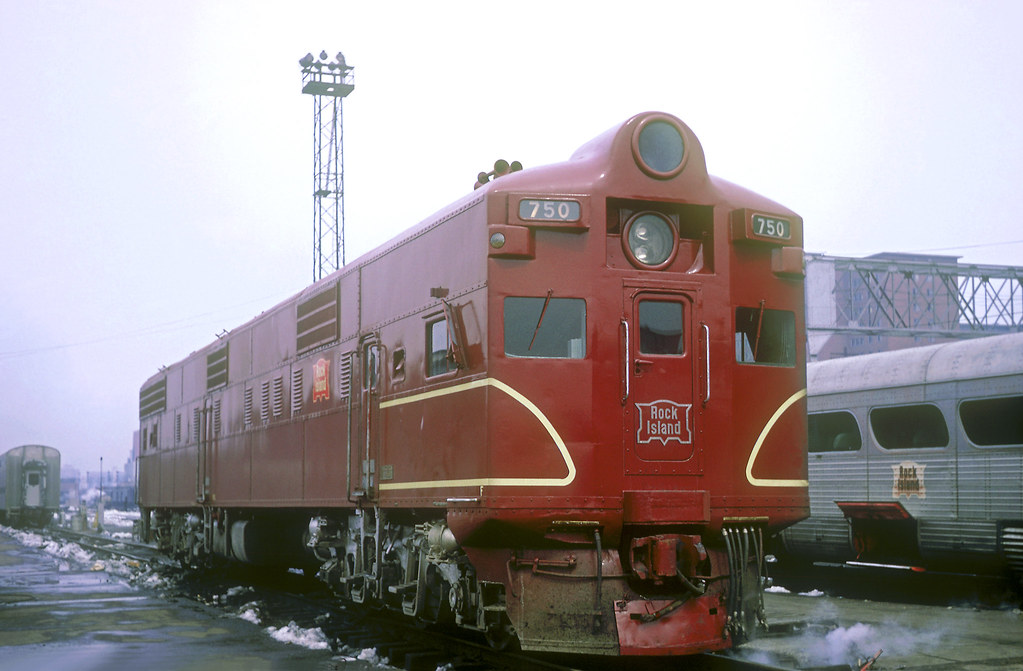

So, the train would leave Chicago with an E6A and an AB6, looking to all the world like an E6 A-B lashup. Then, when it reached Limon, the E6A would uncouple and move out of the way, the AB6 and the lead two to three cars would uncouple and head off to Colorado Springs and the E6A would hook onto the remainder of the train and head for Denver. Pretty slick. Interestingly, finding photos of an E6A hooked to an AB6 are impossible to find.
But the Rock Island was a sickly railroad. Don Ball Jr. once said that for the Rock, the end always seemed around the corner but never came, until it did. In 1966, seeing that passenger service was unsustainable financially, they discontinued the Rocky Mountain Rocket. But they were still running local passenger service, and Chicago commuter service. So, #750 and #751 had Head End Power generators installed where the steam generators had been and were pressed into Chicago commuter service hauling bi-level coaches.
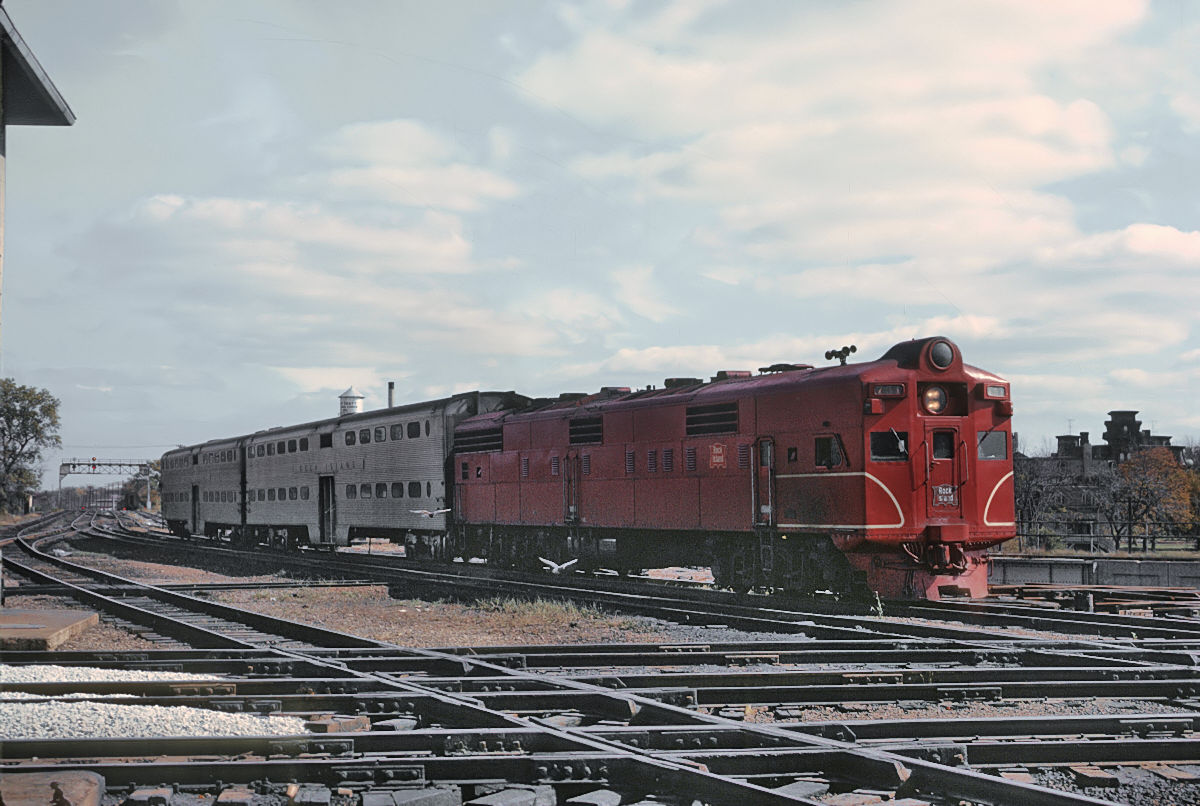
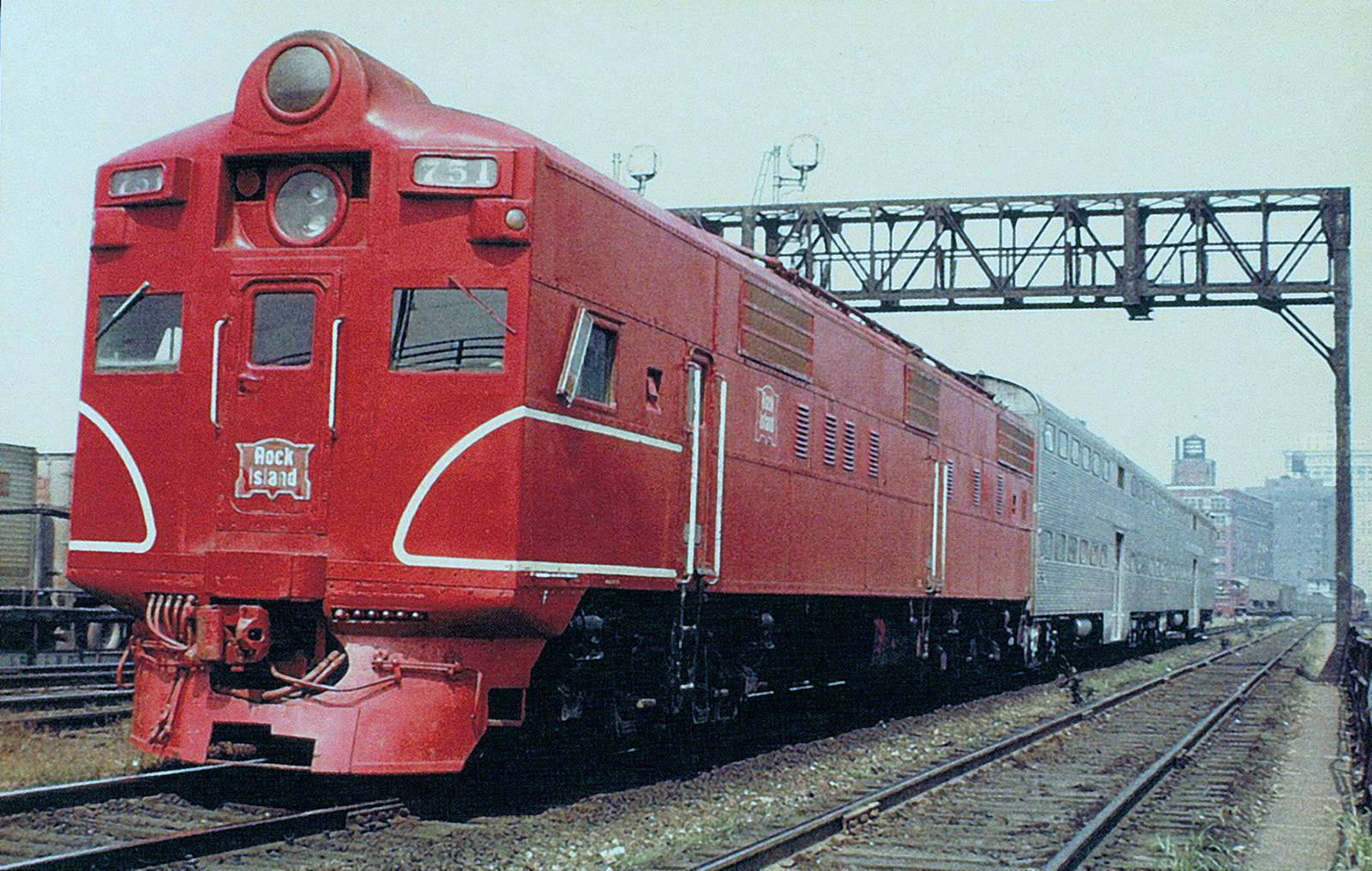
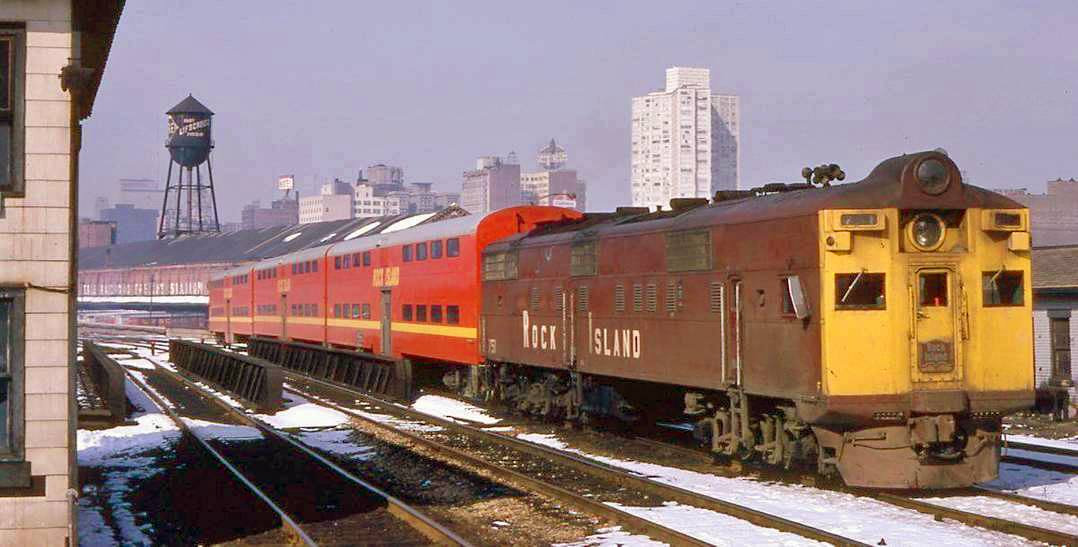
By the early 1970s, the Rock Island decided to rid itself of even the commuter operations, with Amtrak stepping in to take over. No longer needing a set of oddball 30+ year old passenger units, both the #750 and #751 were scrapped. By 1980, the Rock Island ceased to exist as well.

The top one looks like an AB6 hooked to an E6B. Could be when traffic picked up enough to require more power but before they installed the second engine in the AB6, so they just used a B-unit behind it.
The second photo is definitely an AB6 between to A-units.
Also, that second photo would have to be pre-1964 because E8A #651 got destroyed in an accident in Montgomery, Illinois in '64. It was routed over CB&Q rails with 3 other Rock E-units with combined trains #4 and #10 due to a faulty bridge on Rock Island track and was waiting for a CB&Q train to clear a block. A mistake at the tower routed the CB&Q train onto the Rock Island train's track and it hit the parked Rock Island train head-on. Killed 4 people.

I found a bit of info in a book about the picture I posted above with the two A-B FT sets with the two GP9s. On the Northern Pacific Palouse and Lewiston branch, there was a stretch between Troy, ID and Kendrick, ID that was a 3% grade. The NP train locally known as 'The Highball' started in Spokane, headed south and made stops in Palouse, WA and Pullman, WA to set out/pick up cars, then ended in Lewiston, ID. The Lewiston yard crew would have the return train already assembled and ready to go, so that when the highball arrived, it would uncouple from its cars, pick up the new train and then head back towards Spokane almost immediately. The scheduled was based on compliance with a 16 hr workday limit for train crews. Back in the 1950's this train was typically run with doubleheaded steam engines (They eventually used NP W-3 class 2-8-2s when the mainline trains moved to Challengers) and a 3rd engine was added as a pusher to get up the Kendrick grade. The switch to diesels allowed them to go down to a single crew if they used enough power to make it up the hill without an added pusher, so that is why then used 6 engine consists. This is the same grade that I posted about the destruction of one of the NP's rotary snow plows a few pages back when it ended up running away down the hill and derailing.
Eventually, the work house rules kept changing to allow less and less time, so eventually the Highball had to stop and make a crew change in Pullman and couldn't make the round trip from Spokane to Lewiston in one go.
In reply to T.J. :
FTs were 1350hp a piece (although frequently they were marketed as a 2700hp or 4500hp unit, as the FTs were semi-permanently coupled in 2, 3 or 4 unit sets) and GP9s were 1750hp a piece, so that's 8900hp on the head end of that train. Quite a bit for a passenger train.
Also, 16 hour work days on this job must've been brutal.I cannonballed once from TN to NY, about 14.5 hours, and I felt like a zombie the whole next day.
Here's a fun one. Ever seen how they shipped a Chevy Vega? Yup, GM figured out that they could ship more by rail by standing them vertically, 2 across roof to roof. In order to be able to travel nose-down without leaking vital fluids all over the railroad, as well as causing issue with the car itself while still being able to be loaded straight off the assembly line, and drivable the moment it was unloaded, all Vegas destined for transport by rail were equipped with the "VK5" option package. This consisted of a baffle in the oil pan to keep the #1 cylinder from being flooded with oil, a special wiper fluid bottle mounted at a 45-degree angle, a battery with off-center filler caps, and an extra hose in the fuel system. There was also a plug in the fuel tank vent and some plastic spacers reinforcing the motor mounts which were supposed to be removed by the dealer before delivery.
The PRR T1 gets all the glory, but the Q2 4-4-6-4 was actually the most successful Duplex locomotive that the PRR built.

100,000lbs of tractive effort and 7987hp, 124 feet long, 1,049,100lb total weight. These were some serious engines.
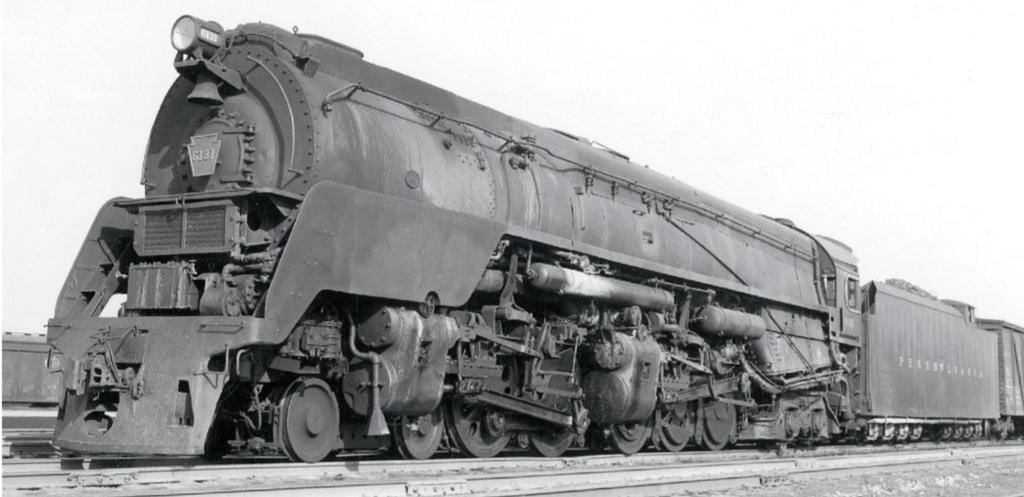
The Q2's biggest issue was that, while it was more powerful than their J1 2-10-4s, the expense of construction and extra maintenance of the more complicated engine mitigated its advantages

There was a Q1 as well, a single one. It was an experimental engine, which paved the way for the Q2. The Q1 was a 4-6-4-4 instead, and had 77" drivers versus the Q2's 69" drivers. The larger drivers forced a longer wheelbase and the PRR was concerned that putting the second set of cylinders between the rear of the front set of drivers and the front of the rear set of drivers (like a regular articulated engine) would make it too long to fit on a turntable. So they butted both engines together and mounted the second of cylinders alongside the firebox with the rods running forward. While this made the engine able to fit on the turntable, the heat and grit from the firebox caused frequent issues with the rear set of cylinders and the engine was not a success.
NickD said:
Here's a fun one. Ever seen how they shipped a Chevy Vega? Yup, GM figured out that they could ship more by rail by standing them vertically, 2 across roof to roof. In order to be able to travel nose-down without leaking vital fluids all over the railroad, as well as causing issue with the car itself while still being able to be loaded straight off the assembly line, and drivable the moment it was unloaded, all Vegas destined for transport by rail were equipped with the "VK5" option package. This consisted of a baffle in the oil pan to keep the #1 cylinder from being flooded with oil, a special wiper fluid bottle mounted at a 45-degree angle, a battery with off-center filler caps, and an extra hose in the fuel system. There was also a plug in the fuel tank vent and some plastic spacers reinforcing the motor mounts which were supposed to be removed by the dealer before delivery.
I wonder if any of those rail cars survive?
You'll need to log in to post.